Are arabica coffee beans American black coffee? where does Arabica coffee beans come from?
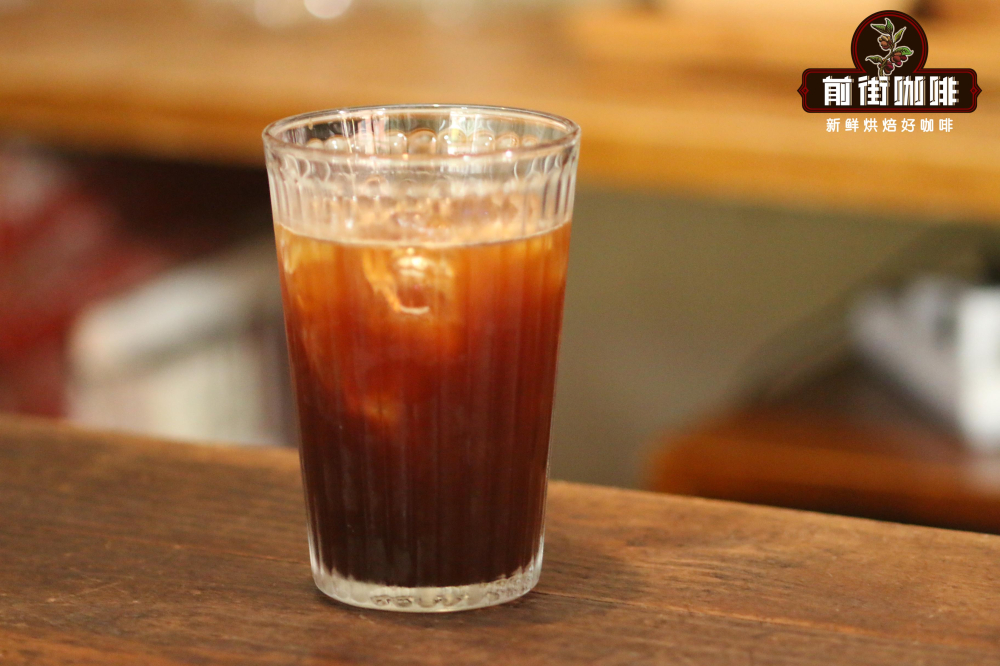
Whenever sleepy, early workers will give themselves a cup of iced American coffee, refreshing taste plus mellow coffee aroma, quickly return to work. So do you know what kind of coffee beans are used in the United States? The front street of this article will introduce you to Arabica, the main variety of coffee.
The global coffee beans are divided into two categories: Arabica coffee and Robusta coffee.
There are three main kinds of coffee beans in the world, but there are only two kinds of coffee beans that are of real commercial value and are widely cultivated, including Coffea Arabica of small fruit coffee and Robusta of medium fruit coffee. In addition, there is a large fruit coffee (Coffea Liberica), the fruit is twice as large as small fruit coffee, because the flavor is generally relatively rare on the market.

Coffee is a tropical cash crop, which is generally grown on the coffee belt between the Tropic of Cancer and the Tropic of Cancer. It requires relatively high and stable temperature, abundant annual rainfall and sunshine, and fertile soil with good drainage, which are all suitable conditions for planting coffee trees. The "coffee belt" covers more than 70 countries and regions in the world, among which more than 50 countries and regions have climate conditions that meet the needs of coffee bean growth, so they have become coffee producing countries. Like Brazil, Colombia, Ethiopia, Kenya, Indonesia. As well as Yunnan and Hainan are also on the coffee belt, each coffee producing area has a unique planting environment and microclimate for Arabica to provide a variety of growth conditions, forming a unique flavor and taste.
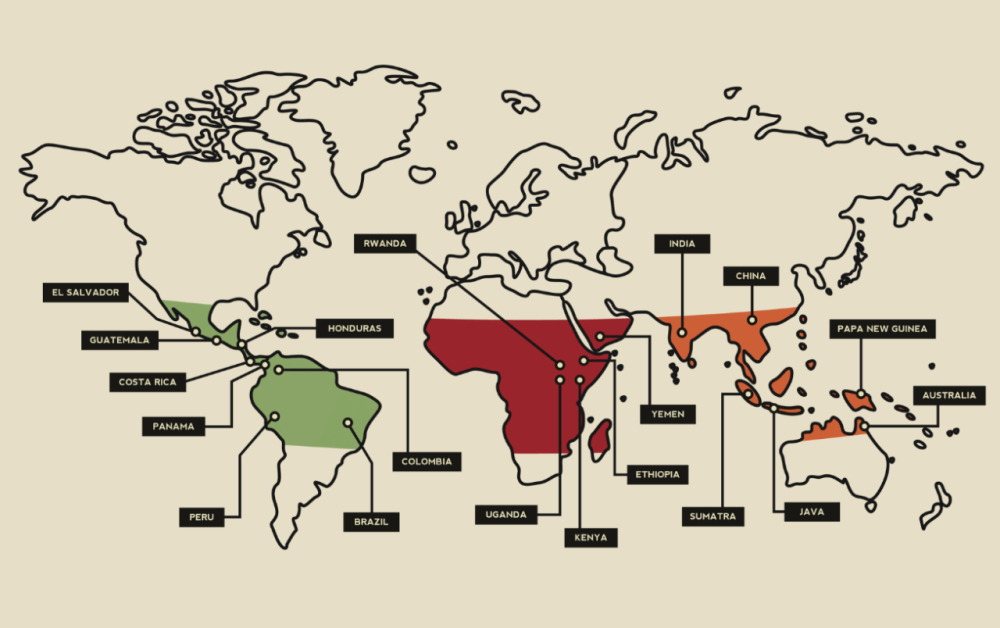
Arabica species, as the main variety of coffee in the world, have very strict requirements on the growth environment. Arabica species need to grow at a height of 800 to 2200 meters without frost, and the higher the altitude is, the significant temperature difference is formed, which delays the ripening of coffee fruit, which is more conducive to the accumulation of flavor substances and fuller aroma development. In addition to high altitude, Arabica also needs plenty of rainfall, sunshine, fluffy soil with good drainage, and fertile soil. In terms of cultivation, the region is very limited. Therefore, in order to produce high-quality coffee beans, growers need to invest more in management and higher labor costs.
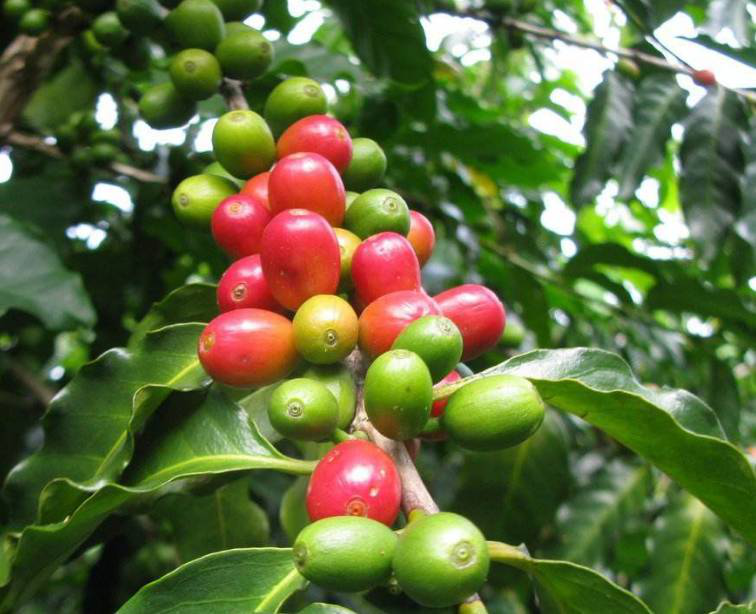
For the "delicate" Arabica, Robusta has a caffeine content of 2.7% Mel 4%, twice that of Arabica. Caffeine, as a natural pesticide for plants, is protected from most insects, so it is easier to grow and cheaper, coupled with higher amino acids and chlorogenic acid, with a mellow, lower bitter taste. As well as walnut, peanut, hazelnut, wheat, cereal and other flavors, when not handled well, there will be a fishy smell, so it is not so popular and is often used in deep baking Italian beans formula or instant coffee.
In the past, people drank coffee only for a rich and mellow bitterness. with the continuous promotion of boutique coffee culture, people have higher requirements for the taste, taste, and quality of coffee. Therefore, aroma-diverse Arabica beans are more in line with the high needs of the current boutique coffee market than Robusta. Many kinds of hand-made coffee beans on the front street bean list belong to Arabica varieties, so it can be seen that people prefer Arabica with pure flavor to Robusta.
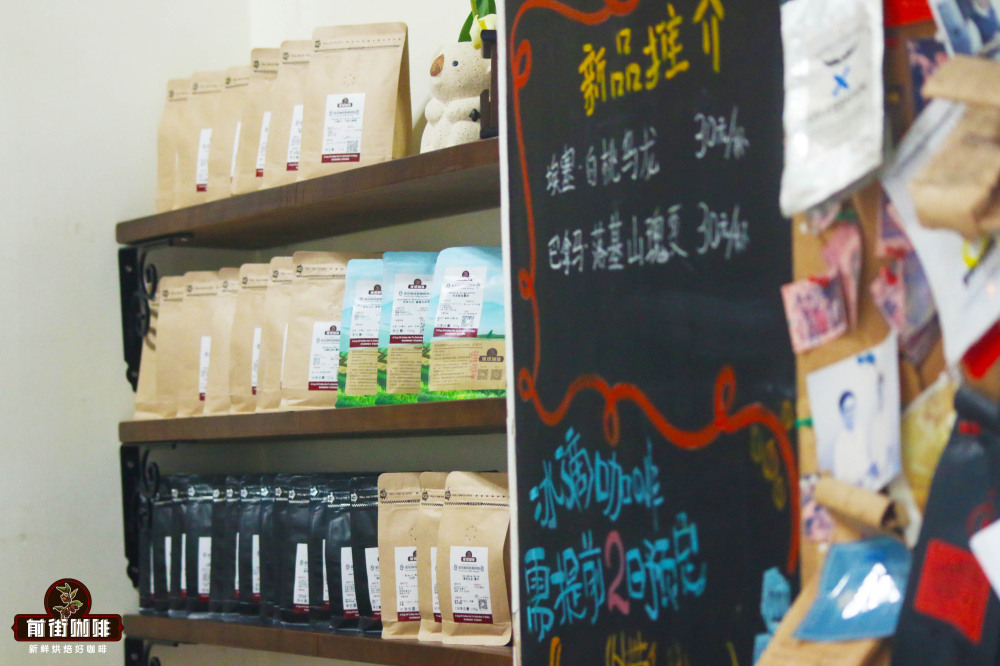
Who are the representatives of the Arabica family?
Arabica, as a large category, can be divided into nearly 3,000 varieties, all of which are derived from Tippica, the oldest native species in Ethiopia, and varieties planted in South America or Asia. As a kind of crop, coffee flavor is always closely related to variety, climate, altitude, soil, management and other factors, which is the natural embodiment of varieties and local soil. Here in Qianjie, select some representative varieties to learn about Arabica.
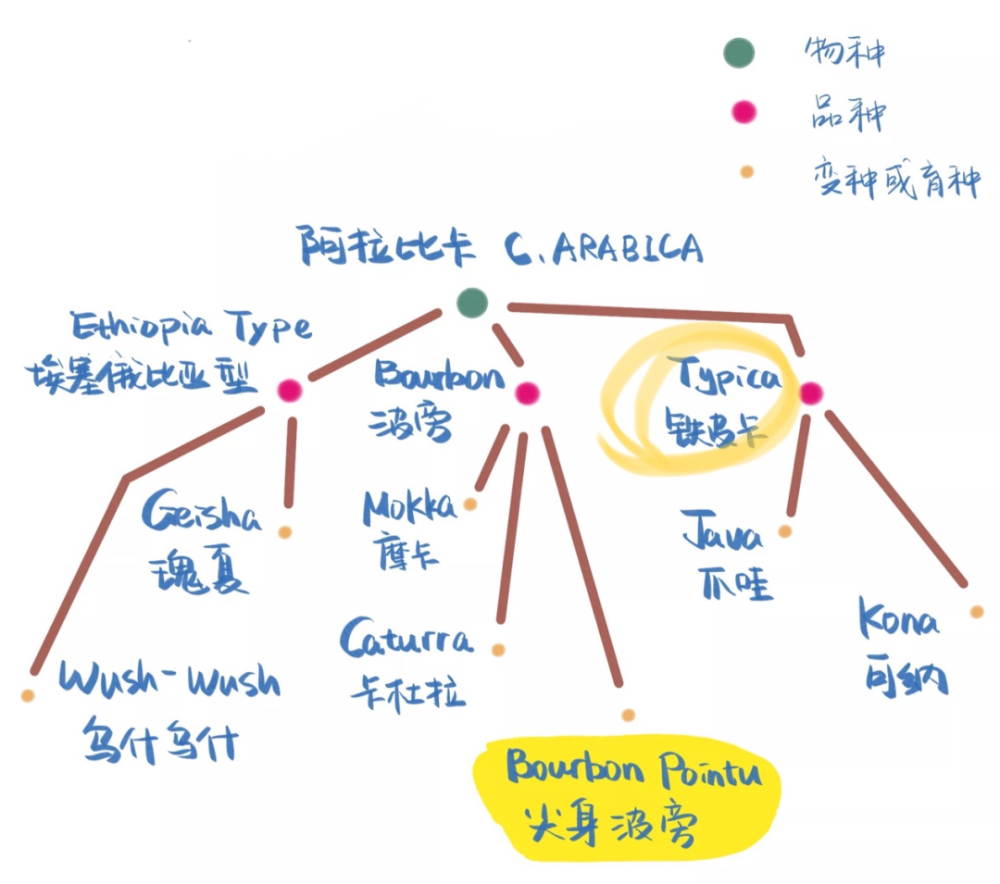
The iron pickup of Jamaica
The oldest native variety in Ethiopia was discovered between the 15th and 16th centuries AD. The iron pickup is characterized by a tall coffee tree, bronzed leaves at the top, large and long coffee beans, pointed at both ends, a bit like an egg. Iron pickup coffee often has a sour citrus taste, with a sweet aftertaste, is praised by many people as elegant and clean coffee beans. Unfortunately, its low yield and poor resistance to leaf rust were gradually replaced by farmers with other more robust varieties.
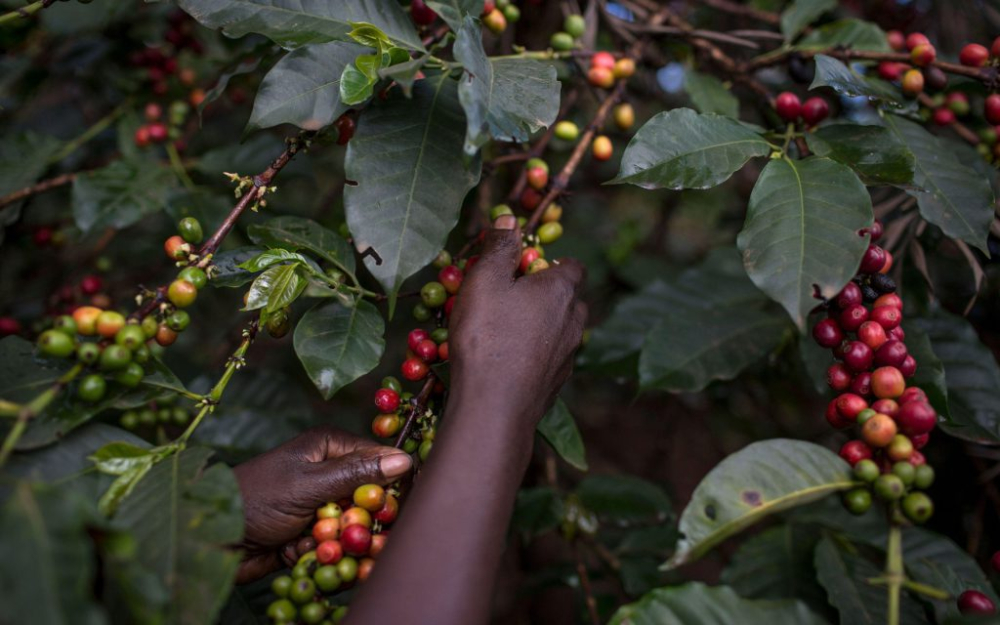
Iron pickups were introduced to this country by Sir Nicholas Lawes in the 18th century and were soon introduced to the Blue Mountains for cultivation for more than two hundred years. And the blue mountain iron card also adapted to the local island rainforest climate, evolved a stronger disease resistance, in which coffee berry disease will be much stronger than the general tin card. Qianjie believes that the exquisite and clean flavor of the Blue Mountains is inseparable from Jamaica's careful cultivation of the varieties of iron pickups, which makes them integrate into the local soil, as well as the excellent soil and unique microclimate of the Blue Mountains. The front street uses medium-depth baking to maximize the chocolate and nutty aromas of coffee, while retaining soft acidity and sweetness, making the overall taste balanced.
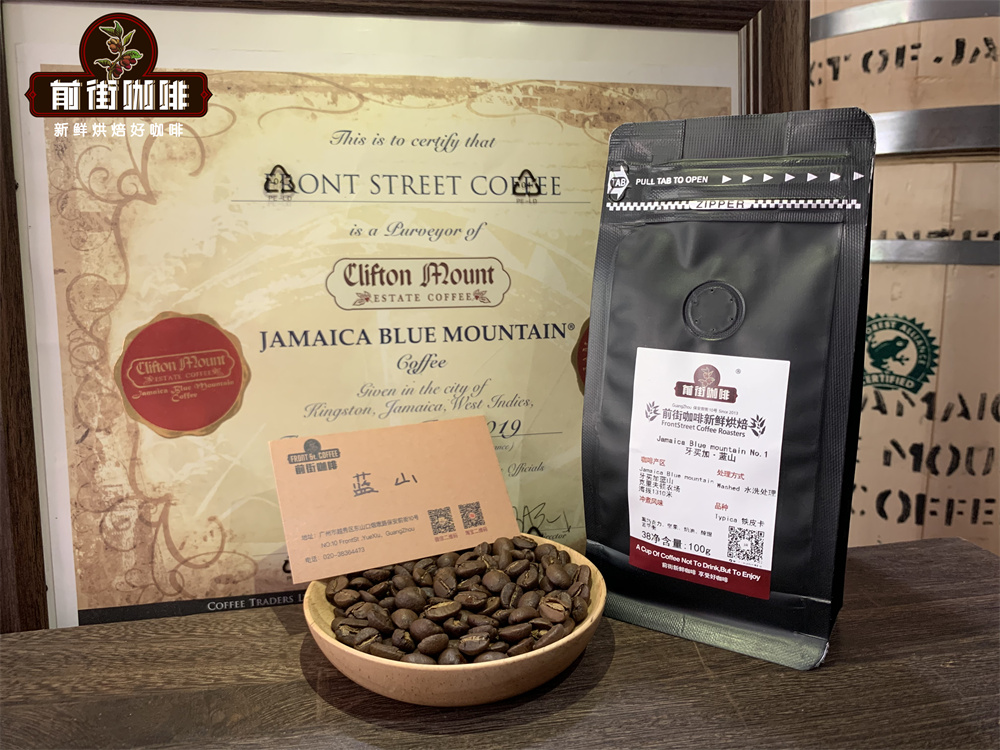
The Rose Summer of Panama
Friends who often drink hand-made coffee must have heard of Panamanian Rosa Coffee, which is synonymous with contemporary boutique coffee because of its amazing aroma. The rose variety is derived from iron pickup and is also produced in Ethiopia, the birthplace of coffee.
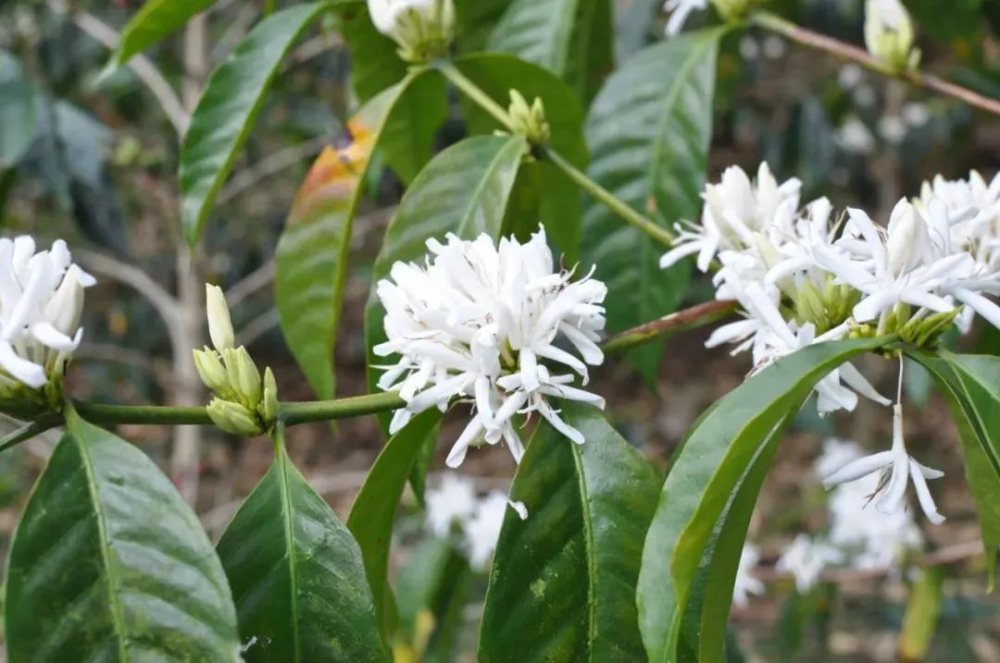
Rose summer is very picky about the growing environment, requiring high altitude, fertile soil, clouds or plant shade, can not be directly exposed to the sun. The owner of the emerald manor said that the garden needs a large number of shade trees to block the sun for the delicate rosy summer, and traditional pruning should be used at the initial stage of planting, otherwise the plant is easy to die. The higher the altitude is, the longer the ripening time of coffee fruit is, and the more complex and unique flavor performance is. Unlike other coffee varieties, the foliar system of Rosa coffee tree is very thin, that is to say, the efficiency of photosynthesis is very low, the root is still very fragile, and the absorption of water and nutrients is very slow, so the yield of coffee is very low. coupled with the high altitude growth environment, the fruit ripens later.
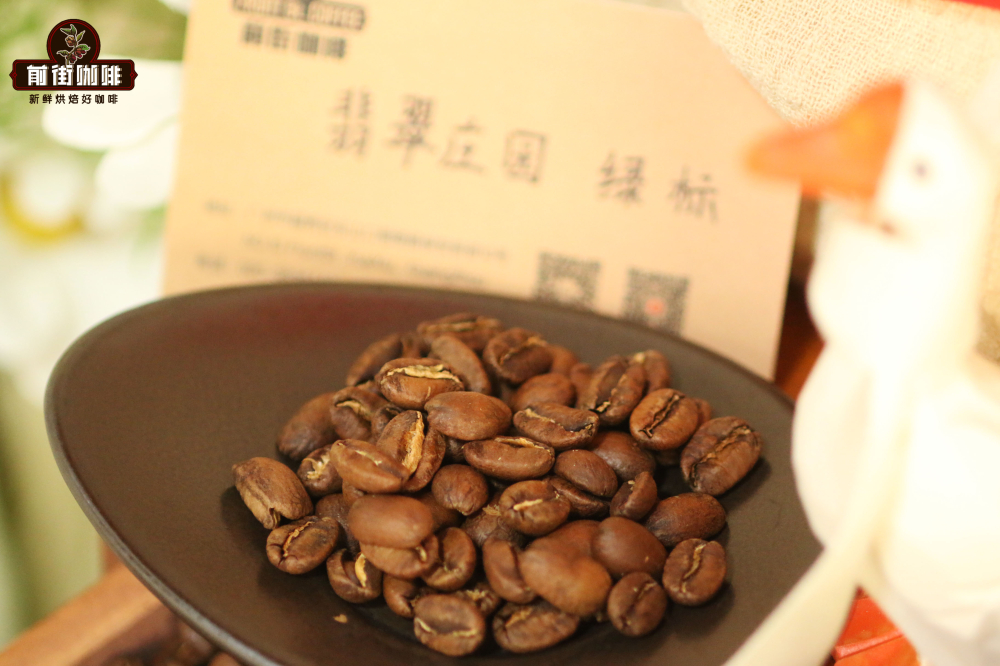
At present, Rosa Rosa has been planted in many parts of the world, and it is the new king of boutique coffee, among which Panama, Guatemala, Colombia and other Latin American countries have higher quality, and Panamanian Rosa is the leader in boutique coffee. When it comes to rose summer coffee, of course, the most popular coffee on the Qianjie bean list is the rose summer coffee produced by the famous jadeite manor, which is divided into red rose summer, green rose summer and volcanic rose summer according to different characteristics. High-quality Rosa coffee is loved by many coffee people because of its pungent aromas of roses, oranges, berries and honey.
Bourbon in Brazil
Bourbon comes from the natural mutation of the iron pickup, the bean-shaped thin point turns into a round body, which was first found on the island of Bourbon and Reunion on the east coast of Africa. It was named bourbon in 1715 after France transplanted Yemeni mocha round beans to the island of Bourbon on the east coast of Africa (renamed Reunion after the French Revolution). Bourbon beans were introduced to Brazil in 1727.
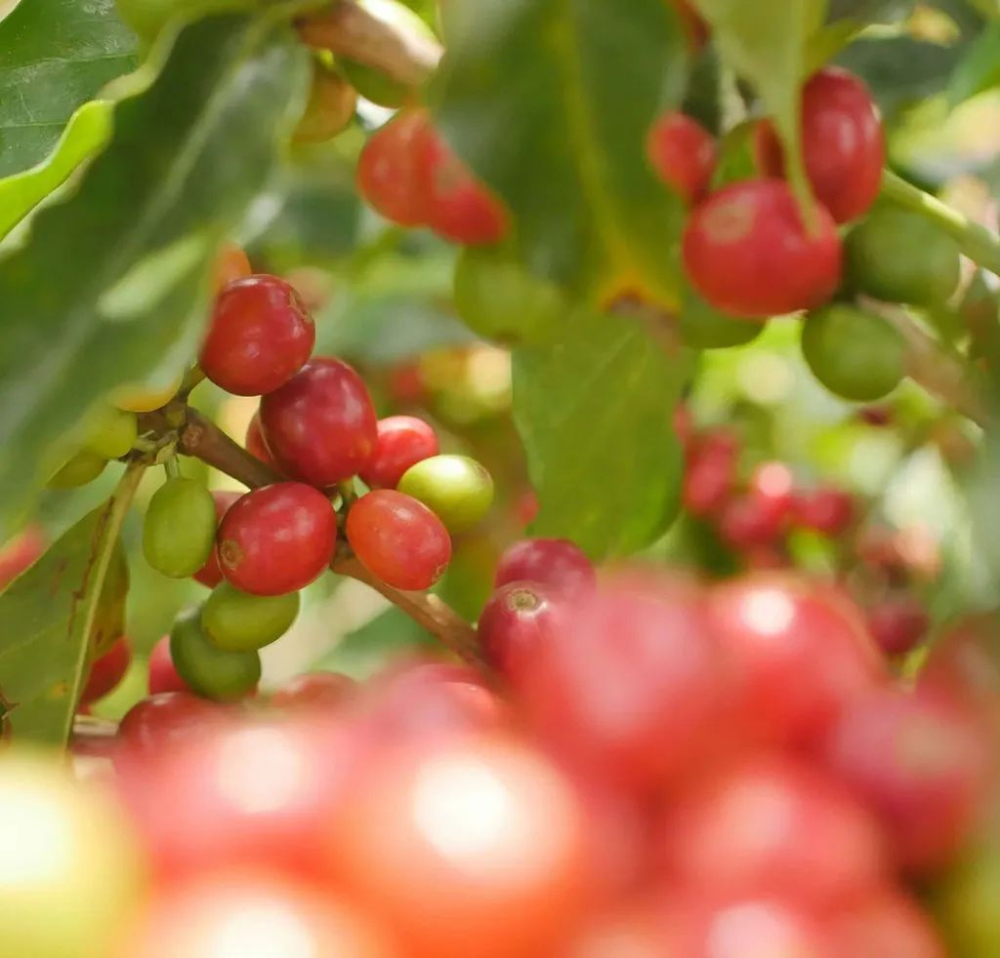
Although the yield is not high, bourbon species have better resistance to rust leaf disease than weak tin card species. Bourbon coffee grown at high altitude has rich and delicate flavor, strong smell and soft acidity. Generally speaking, the bourbon fruit we see changes from green to yellowish, orange, red, and finally to a fully ripe dark red, which is what we call red bourbon.
Most of the Brazilian coffee has a low sour taste, coupled with the mellow aroma of the coffee, the entrance is extremely smooth, and the aftertaste can make people comfortable and pleasant. Qianjie Coffee chose a half-sun red bourbon coffee as the representative of Brazil, coffee flavor with obvious nuts and chocolate, medium caramel sweetness, smooth taste, overall balance. Qianjie will add it to the rations bean series, Qianjie rations beans is the facade of each large producing area, showing the basic flavor of the producing area, coffee entry-level players can understand the basic flavor of the producing area, and then according to their own favorite choice in-depth understanding of different types of producing areas.
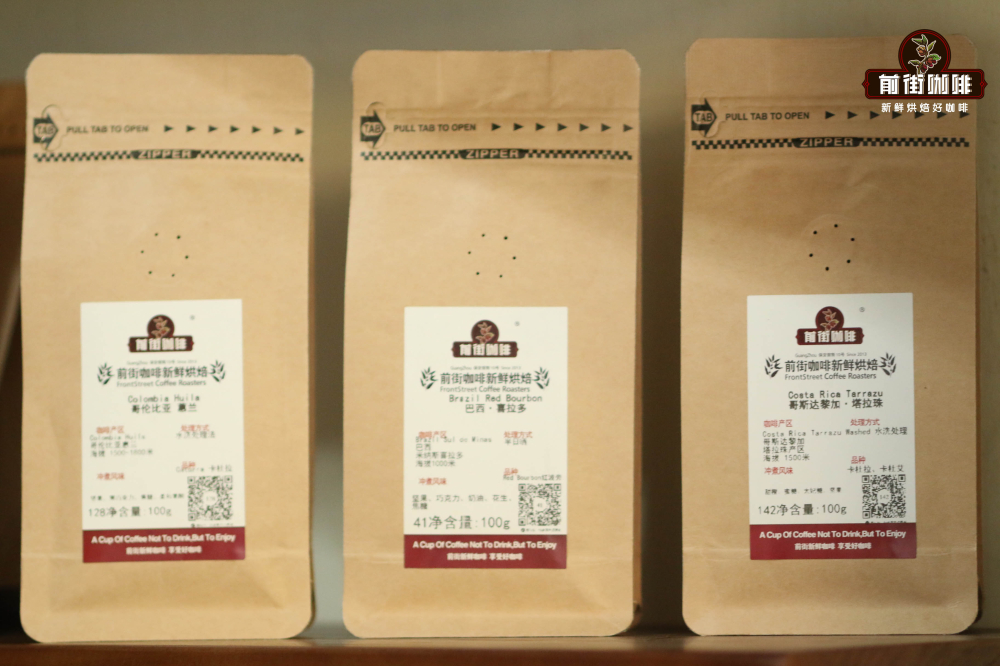
Kaddura in Central and South America
Kaddura, a natural mutation from bourbon, was discovered in Brazil in 1937. The tree shape is relatively short and the disease resistance is not high, but because it can be planted intensively, the fruit hanging rate is higher, so the yield is higher than bourbon and other varieties, and it is widely planted in Central and South American countries. Kaddura is suitable for high altitude areas ranging from 700m to 1700 m. The higher the altitude, the better the flavor, and the bean yield is relatively reduced. In terms of flavor, Kaddura has a bright acidity, a fruity taste, chocolate and nuts after medium-deep roasting, making it the winner of many coffee competitions.
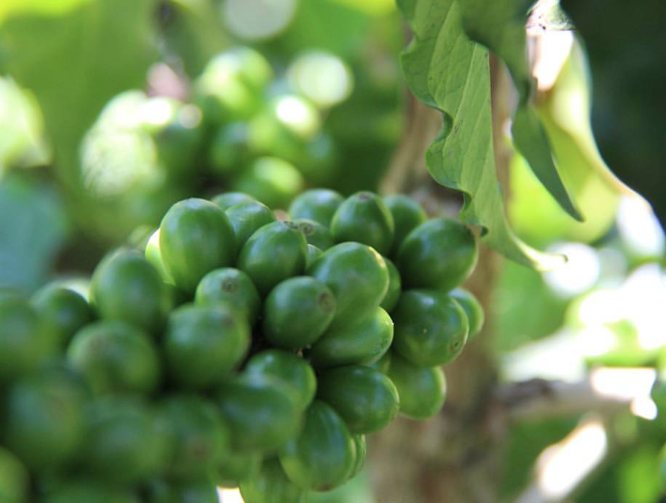
Many coffee beans on the Qianjie bean list contain Kaddura varieties. If you want to know the flavor characteristics of this variety, Qianjie recommends Colombian rations beans, which are selected from the washed Kaddura variety with high cleanliness. Qianjie hopes to highlight the classic Colombian coffee flavor, with medium-to-deep roasting, showing nutty, dark chocolate and caramel aromas.
SL28&SL34 in Kenya
During the period from 1935 to 1939, Scott's laboratory used SL as a prefix for selected coffee varieties. Forty-two varieties from different producing areas were selected in the laboratory, and their yield, quality, drought resistance and disease resistance were studied. After numbering and screening one by one, SL-28 and SL-34 were finally obtained.
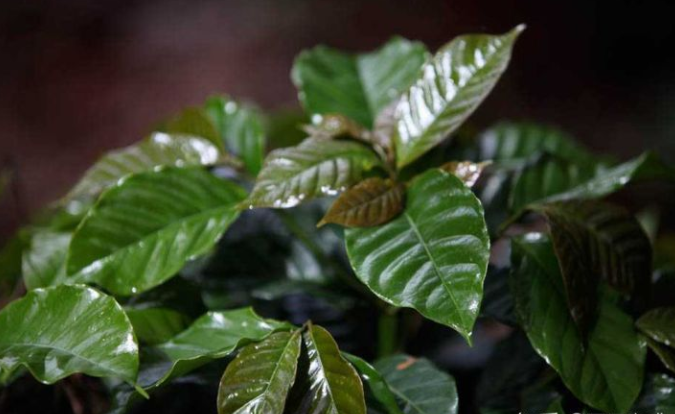
SL28 comes from the bourbon gene group, the bean shape is short and round, the bean body is thick, and it has the flavor characteristics of rising acidity and obvious sweetness. SL34 comes from the iron pickup gene group, the bean shape is oval, it is not as plump as the tin card variety from the side, it will appear relatively flat, and it has the flavor characteristics of sweet and sour balance and caramel aftertaste. Kenny Asalia coffee beans in Qianjie are selected from these two varieties and washed for 72 hours, showing the full acidity of Brin, yellow sugar, black plum and virgin fruit.
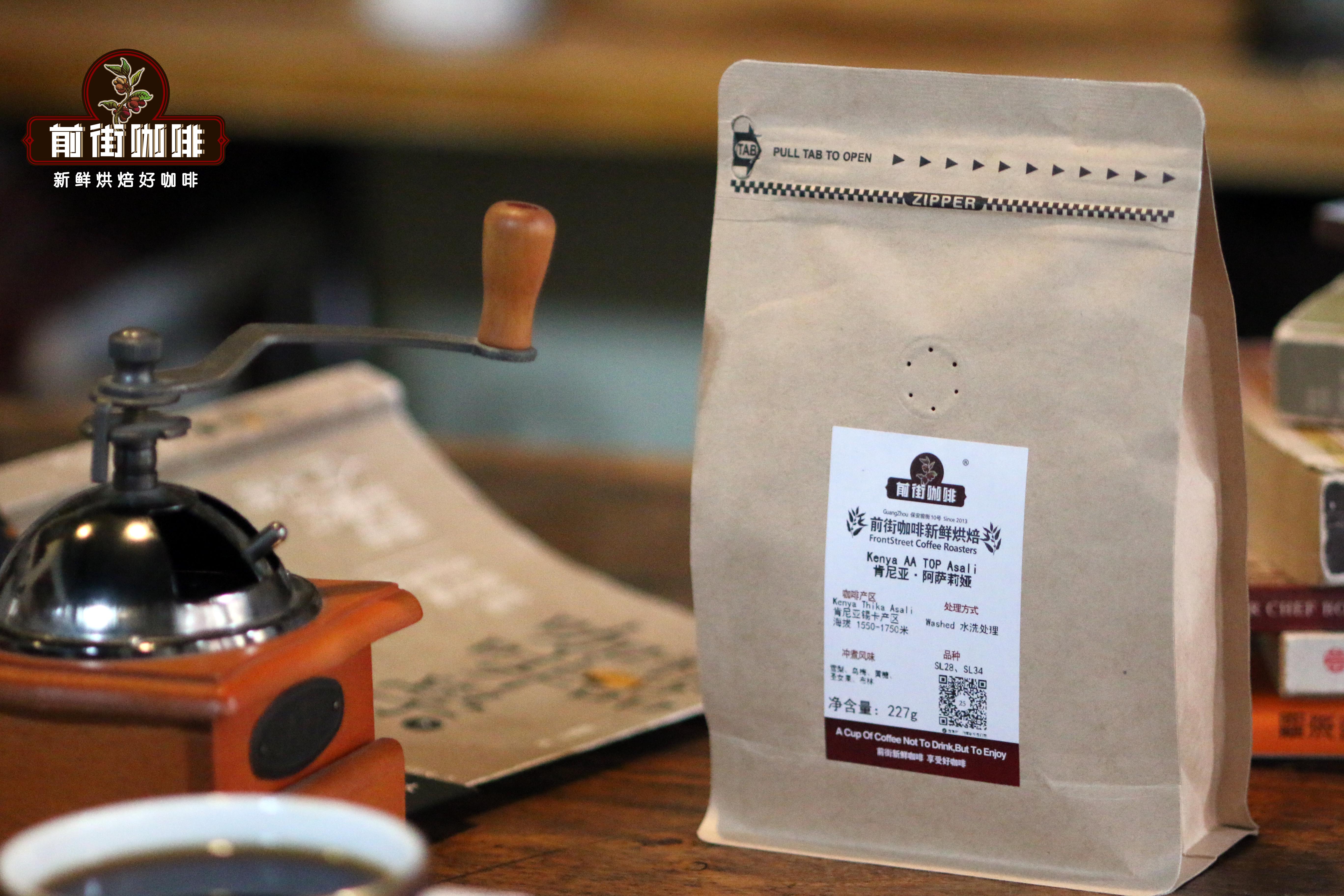
Professional coffee knowledge exchange more coffee bean information please follow the coffee workshop (Wechat official account cafe_style)
For more boutique coffee beans, please add private Qianjie coffee on Wechat. WeChat account: qjcoffeex
Important Notice :
前街咖啡 FrontStreet Coffee has moved to new addredd:
FrontStreet Coffee Address: 315,Donghua East Road,GuangZhou
Tel:020 38364473
- Prev
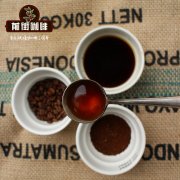
What are the sweeter coffee beans? typica Coffee, Fine Coffee, Common beans
Professional coffee knowledge exchange more coffee bean information please pay attention to the coffee workshop (Wechat official account cafe_style) front street-tin card variety introduction of coffee varieties will directly affect the coffee flavor, quality, coffee tree planting requirements, coffee tree disease resistance and so on. In the coffee consumer side, coffee practitioners and coffee consumers will be more concerned about the variety of coffee brought directly to the coffee style.
- Next

Does Arabica Coffee Bean taste good? handmade single Coffee Bean correct method Flavor and Taste characteristics
Professional coffee knowledge exchange more coffee bean information please follow the coffee workshop (Wechat official account cafe_style) front street-Arabica variety introduction Arabica coffee began to spread around the world in the mid-1700s, from a historical point of view, most coffee is Typica and Bourb
Related
- Beginners will see the "Coffee pull flower" guide!
- What is the difference between ice blog purified milk and ordinary milk coffee?
- Why is the Philippines the largest producer of crops in Liberia?
- For coffee extraction, should the fine powder be retained?
- How does extracted espresso fill pressed powder? How much strength does it take to press the powder?
- How to make jasmine cold extract coffee? Is the jasmine + latte good?
- Will this little toy really make the coffee taste better? How does Lily Drip affect coffee extraction?
- Will the action of slapping the filter cup also affect coffee extraction?
- What's the difference between powder-to-water ratio and powder-to-liquid ratio?
- What is the Ethiopian local species? What does it have to do with Heirloom native species?

